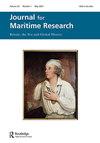Quantifying countermeasure and detection effectiveness to threats using U-boat data from the Second World War
Q3 Arts and Humanities
引用次数: 1
Abstract
ABSTRACT This article provides a detailed analysis using learning theory of the classic naval confrontation between the Allies and Germany in the North Atlantic during the Second World War. New measures of countermeasure effectiveness introduced are the rate and probability of sinking as a function of the risk exposure and learning opportunity on both sides. These replace the ‘sweep rate’ used in earlier analyses, and demonstrates that a relevant risk exposure, experience and learning measure must replace the usual calendar time representation. Using archival data, the analysis confirms that the use of decryption intelligence did not itself result in a statistically significant increase in U-boat sinkings. At both the entire system and the individual human performance levels the rate, probability and number of sinkings are all exponential in form, decreasing with increasing experience and/or risk exposure. The reduction of between five and ten in the merchant ship loss data is exactly the range attained in multiple industrial and technological systems worldwide. The analysis shows the learning rate and countermeasure effectiveness trends are adversely affected by the stress of combat and wartime chaos as compared to peacetime.利用二战u艇数据量化对抗和探测威胁的有效性
本文运用学习理论对第二次世界大战期间盟军与德国在北大西洋的经典海上对抗进行了详细分析。引入了衡量对策有效性的新指标,即沉没率和沉没概率作为双方风险暴露和学习机会的函数。这些取代了早期分析中使用的“扫描率”,并证明了相关的风险暴露、经验和学习度量必须取代通常的日历时间表示。利用档案数据,分析证实,解密情报的使用本身并没有导致u型潜艇沉没的统计显著增加。在整个系统和个人表现水平上,下沉的速率、概率和数量都呈指数形式,随着经验和/或风险暴露的增加而减少。商船损失数据减少5%至10%,正是全球多个工业和技术系统所达到的范围。分析结果显示,与和平时期相比,战争压力和战时混乱对学习率和对策效果趋势产生了不利影响。
本文章由计算机程序翻译,如有差异,请以英文原文为准。
求助全文
约1分钟内获得全文
求助全文
来源期刊

Journal for Maritime Research
Arts and Humanities-History
自引率
0.00%
发文量
0
期刊介绍:
The Journal for Maritime Research ( JMR ), established by the National Maritime Museum in 1999, focuses on historical enquiry at the intersections of maritime, British and global history. It champions a wide spectrum of innovative research on the maritime past. While the Journal has a particular focus on the British experience, it positions this within broad oceanic and international contexts, encouraging comparative perspectives and interdisciplinary approaches. The journal publishes research essays and reviews around 15-20 new books each year across a broad spectrum of maritime history. All research articles published in this journal undergo rigorous peer review, involving initial editor screening and independent assessment, normally by two anonymous referees.
 求助内容:
求助内容: 应助结果提醒方式:
应助结果提醒方式:


